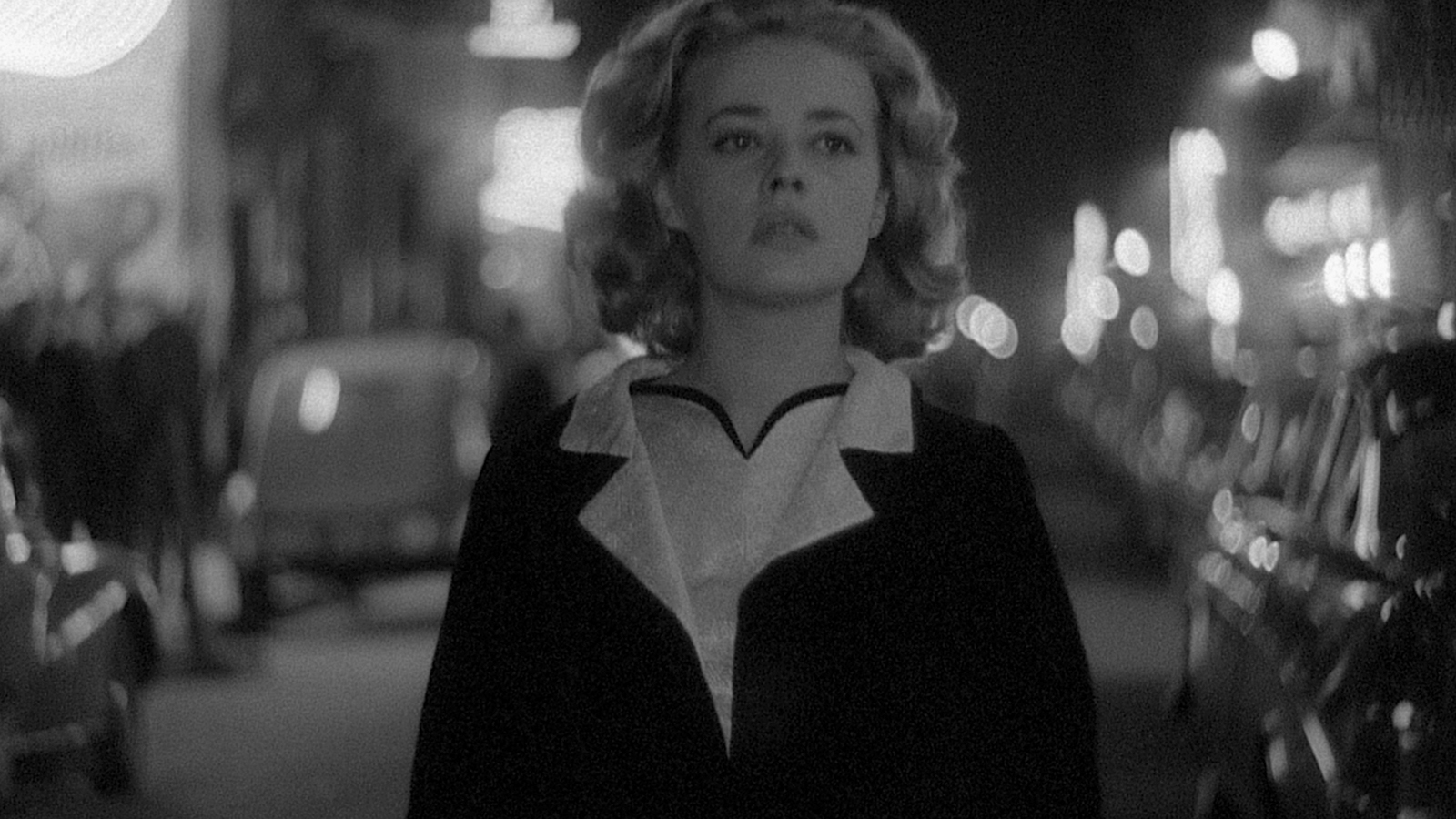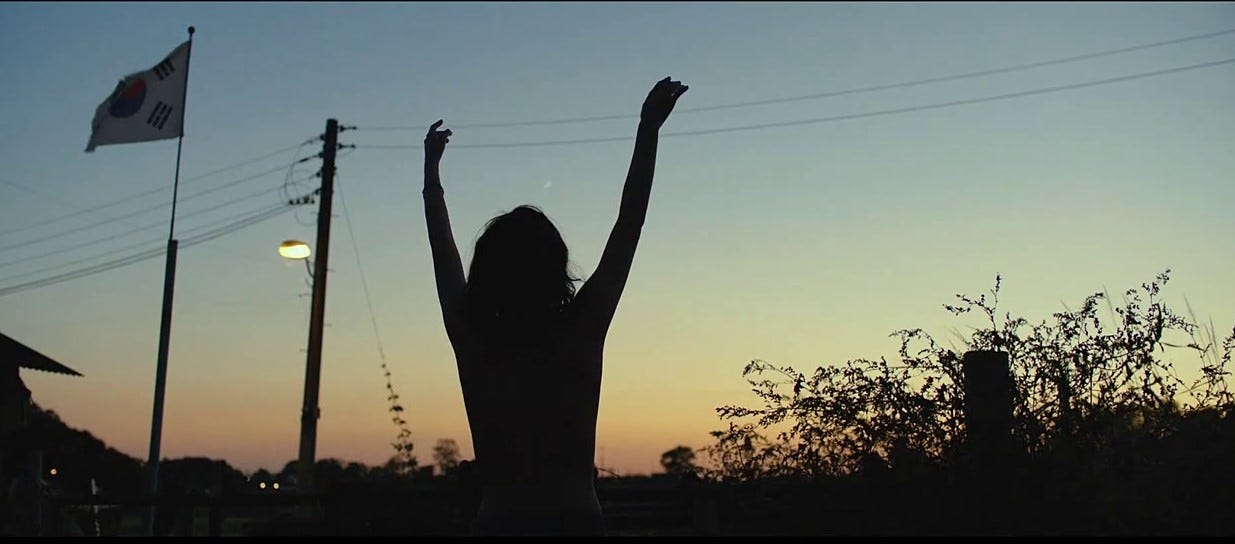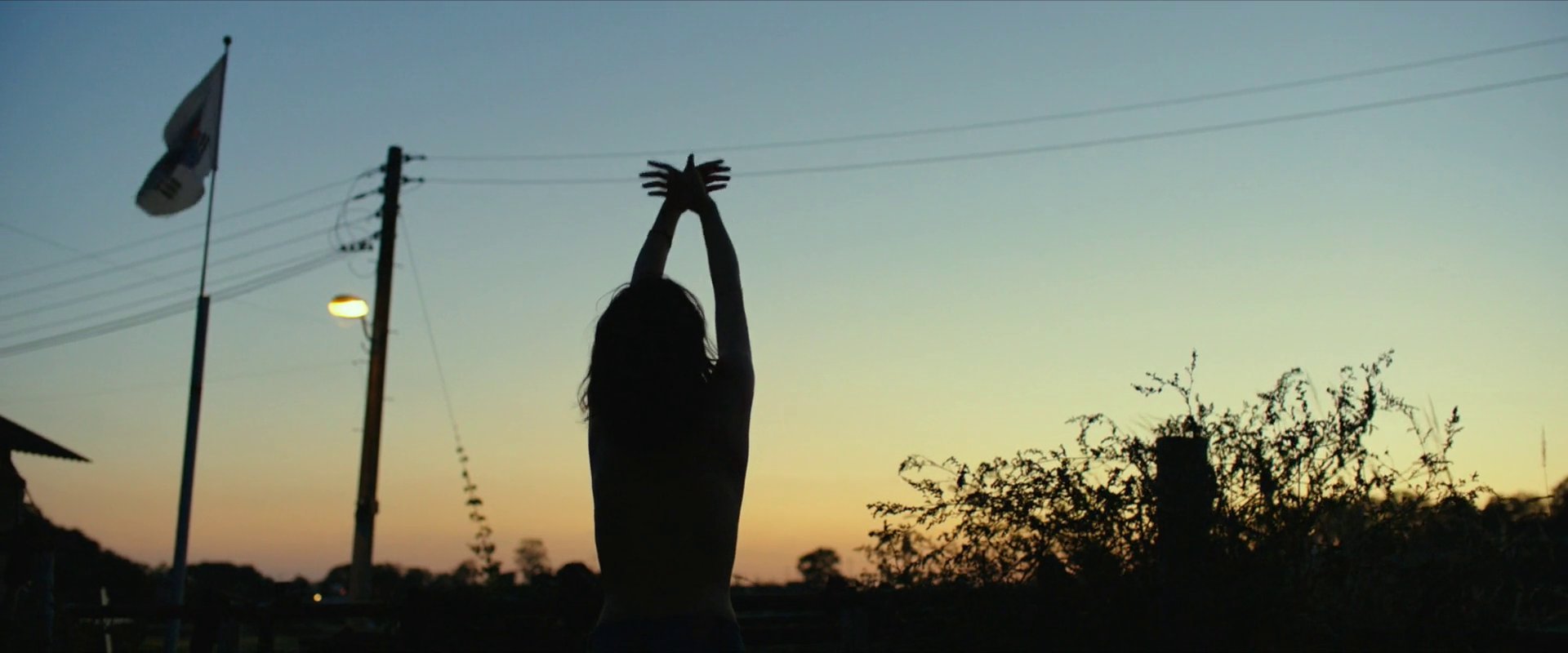BURNING GALLOW
by
OJO
A sunset of solitude, a hopeless night.








December, 2023
A walk before midnight under the lights of Paris, a lost gaze, and a nocturnal woman. The loneliness that turns into sadness, and the rupture of the idea of reunion that becomes bigger with each step she takes. Looks that judge, a car that is not, and a silent night. In this scene, Louis Malle in Elevator to the Gallows elegantly and subtly captures an atmosphere that encompasses loneliness, hopelessness, and loss in the form of an audiovisual climax under the jazz of Miles Davis with Générique. Lee Chang-Dong, almost six decades later, reuses the same piece to build on the idea of freedom and meaning in the form of a dance under a burning sunset that, as with Elevator to the Gallows, is a breaking point for the story and character under the same dome of emptiness in which music and image complement each other thematically.
Générique, composed and performed by Miles Davis for Elevator to the Gallows, exposes a landscape of solitude and tranquility using a lonely trumpet and a piano breeze. It encapsulates meaning by playing the main character in both scenes, devoid of dialogue and complex events, being a subtle (but transcendent) form of expression without the need for words. To live and disappear, to fall into loneliness. Both scenes come on moments of understanding or the attempt to do so as a way of realizing that ideas can or cannot be true, such as vanishing or seeing distantly the materialization of unity. Nonetheless, the way of doing so, in terms of narrative and filmmaking style couldn’t be more different; Elevator to the Gallows thrives in setting a sophisticated and elegant stylish tone throughout the film, from the “It’s me who can’t take it anymore” initial conversation to the exuberant use of a Mercedes 300 SL, jazz music, and obviously, Jeanne Moreau’s midnight walk scenes; Burning, on the other hand, plays with the concept of idea and certainty by showing a city, relationships, and characters devoid of answers. It subtly brings questions about the meaning of purpose in manners of the Little Hunger, the Great Hunger, and the doubts that lead us into constructing our conclusions as with the invisible cat, the infinite tangerines, and the burning greenhouses. In terms of form, both films, as opposites, find common ground in music themes under the same dome of loneliness. A thematic and audiovisual framework where interconnected themes and ideas find each other. Both films use music as an idiosyncratic panorama that reflects in the form of a milestone in the film’s narrative in both cases.
A sunset of solitude, a hopeless night
Walk and dance,
The loneliest trumpet in the dark (light)
Music can convey a sense of timelessness and an element of interpretation of a particular sequence. Being composed for Elevator to the Gallows, Générique carries the emotional burden of Florence as she walks the streets trying to understand what happened to Julien, but most importantly, embracing a sense of solitude as the sky starts crashing down just as her and the idea behind the plan of being together. A percussion breeze and a trumpet that cries in traces of desolation. The scene lets us understand her desperation and helplessness without explicitly telling us what is on her mind because she is lost in silence as she can’t hear Julien’s voice anymore. In Burning, the sky was on fire like Shin Hae-mi. The sunset is the last light and the greatest beauty of the day, a day that is a life that starts to burn in the form of a dance with the realization that everything turns to fire before disappearing, light that turns dark, to fade away. In this sense, the use of Générique isn’t a highlight just because it’s Miles Davis, but because the piece carries a big part of the heart of the scene in the form of trumpet waves of movement floating in loneliness, the loneliness of Shin Hae-Mi living something that is ending. It can be night or day, France or South Korea, black and white or color, but music will always be a time capsule of humanity.
Interestingly, both sequences rotate around a common core of memory. Linking this scene with the end of the film, Florence, through her walks and understanding of the events, fights for an idea that couldn’t materialize and remains only in memory, in pictures where they are together, somewhere, a thought (idea) where nothing can separate them. On the other hand, the dance in Burning was Lee Jong-su’s last memory of Shin Hae-mi. He’s trying to complete a puzzle of missing pieces just by relying on memory and despair. The idea of Shin Hae-mi burned him by losing something that maybe could’ve been more than just a thought (an idea). Even though these scenes are peaceful moments, they enclose and hide the rampage of what happened and what will happen as both main characters lose vitality and purpose. Could they have done something different? Wasn’t the plan perfect? Where is she (he) now? Both endings lie in the immaterial world of perceptions, reminiscence, and sound.
If both films could be summarized into one scene, both of these could easily top the list. Sometimes, the greatness of filmmaking lies in the exploration of sound and image, where even though you find no novelty in its components, we experience a particular and unique voice in a moment that, perhaps non-transcendental on its own, can talk about almost every idea without the need for words by turning simplicity into something memorable.
A sun that faded, a night that cried
Burning skies (lives), love that isn’t brave
I can’t take it anymore
Discovered by memories, burned by the sun

by
OJO
© 2024 OJO Mag. All rights reserved. Use of this site constitutes acceptance of our User Agreement and Privacy Policy and Cookie Statement. OJO may earn a portion of sales from products that are purchased through our site as part of our Affiliate Partnerships with retailers. The material on this site may not be reproduced, distributed, transmitted, cached or otherwise used, except with the prior written permission of OJO Mag.

